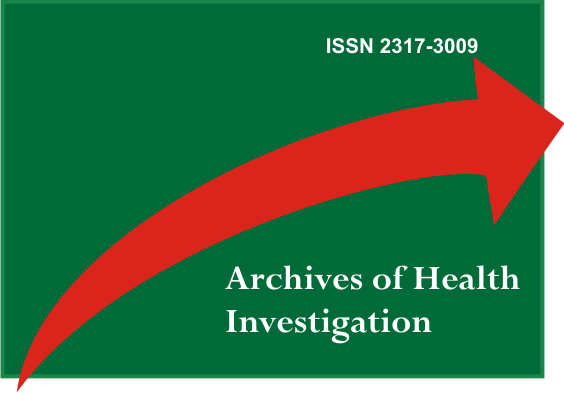Resolução estética de um caso de fluorose através de clareamento dental: relato de caso clínico.
Resumo
A Odontologia Estética é uma área em crescente desenvolvimento e diferentes protocolos de tratamentos para dentes com alteração de cor têm sido desenvolvidos. Dentre eles, o clareamento dental, quando corretamente indicado, é um tratamento eficaz, conservador e seguro. A pigmentação dental pode ocorrer devido a fatores extrínsecos oriundos da dieta ou hábitos associados a um biofilme cromógeno, ou ainda devido a fatores instrínsicos como a fluorose. Paciente do gênero masculino, 23 anos, procurou o serviço odontológico da FOP/UNICAMP, apresentando manchas brancas estriadas e biofilme cromógeno generalizado. Inicialmente, foi realizada a adequação do meio bucal através da profilaxia e raspagem supragengival, caracterizando uma melhora estética significativa. Devido as características das manchas, fluorose TF grau 3, foi realizado o clareamento dental com peróxido de hidrogênio a 35 %, o que proporcionou resolutividade clínica e melhora estética.Descritores: Esmalte Dentário; Clareamento Dental; Fluorose Dentária.
Downloads
Referências
Joiner A. Tooth colour: a review of the literature. J Dent. 2004; 32(Suppl 1):3-12.
Watts A, Addy M. Tooth discolouration and staining: a review of the literature. Br Dent J. 2001; 190(6):309-16.
Fejerskov O, Larsen MJ, Richards A, Baelum V. Dental tissue effects of fluoride. Adv Dent Res. 1994; 8(1):15-31.
Thylstrup A, Fejerskov O. Clinical appearance of dental fluorosis in permanent teeth in relation to histologic changes. Community Dent Oral Epidemiol. 1978; 6(6):315-28.
Kavand G, Broffitt B, Levy SM, Warren JJ. Comparison of dental esthetic perceptions of young adolescents and their parents. Journal of Public Health Dentistry 2012;72(2):164–71.
Celik EU, Yıldız G, Yazkan B. Comparison of Enamel Microabrasion with a Combined Approach to the Esthetic Management of Fluorosed Teeth. Operative Dentistry. 2013; 38(5):134-43.
Loguercio AD, Correia LD, Zago C, Tagliari D, Neumann E, Gomes OM, et al. Clinical effectiveness of two microabrasion materials for the removal of enamel fluorosis stains Oper Dent. 2007;32(6):531-38.
Murphy TC, Willmot DR & Rodd HD. Management of postorthodontic demineralized white lesions with microabrasion: a quantitative assessment Am J Orthod Dentofacial Orthop. 2007; 131(1):27-33.
Bertassoni LE, Martin JM, Torno V, Vieira S, Rached RN, Mazur RF. In-office dental bleaching and enamel microabrasion for fluorosis treatment. J Clin Pediatr Dent. 2008;32(3):185-7.
Li Y. Safety controversies in tooth bleaching. Dent Clin North Am. 2011;55(2):255-63.
Pini NIP, Lima DANL, Sundfeld RH, Ambrosano GMB, Aguiar FHB, Lovadino JR. In situ assessment of the saliva effect on enamel morphology after microabrasion technique. Braz J Oral Sci. 2014;13(3): 187-92.
Catelan A, Pini NIP, Hernandes NMP, Lima DNL, Aguiar FHB. Minimally invasive techniques for esthetic resolution of dental staining. Arch Health Invest. 2014;3(4):1-8.
Sundfeld RH, Croll TP, Briso ALF, de Alexandre RS, Sundefeld Neto D. Considerations about enamel microabrasion after 18 years. Am J Dent. 2007;20(2):67-72.
Peariasamy K, Anderson P, Brook AH. A quantitative study of effect of umicing and etching on the remineralisation of enamel opacities. Int J Paediatric Dent. 2001;11(3):193-200.
Sundfeld RH SND, Rahal V, Pita DS, Okida RCO, Alexandre RS. Different esthetic techniques used in combination to recover smile - On line. Compendium of continuing education in dentistry. 2010; 31(6).
Kihn P. Vital tooth whitening. Dent Clin North Am. 2007;51(2):319-31.
Bhagyajyothi CS, Pushpanjali K. Perceptions and concerns about dental fluorosis as assessed by tooth surface index of fluorosis among high school children in an area of endemic fluorosis—Kaiwara. Oral Health Prev Dent. 2009;7(1):33-8.
Baldani MH, Araújo, PFF, Wambier DS, Strosky ML, Lopes, CML. Aesthetic perceptions of dental fluorosis among young university students. Rev bras epidemiol. 2008;11(4):597-607.


